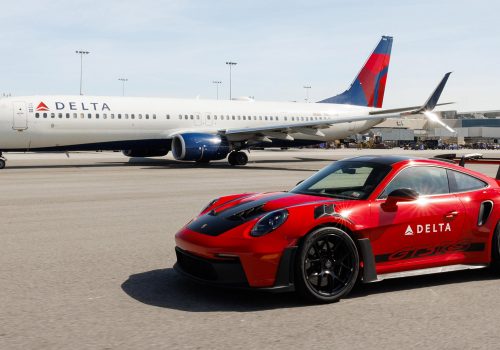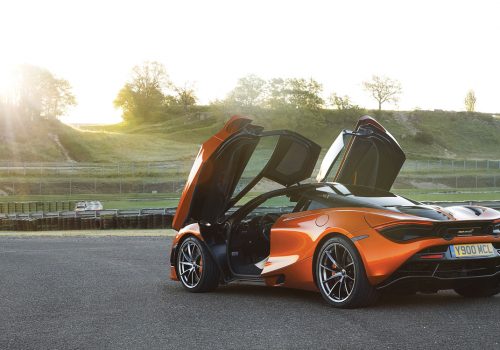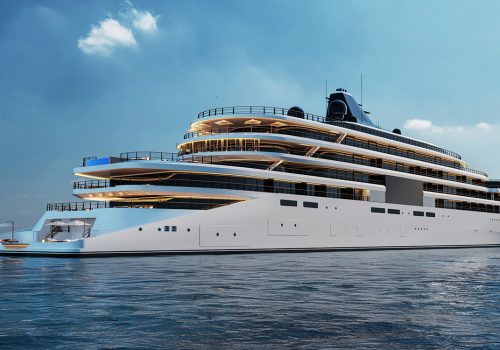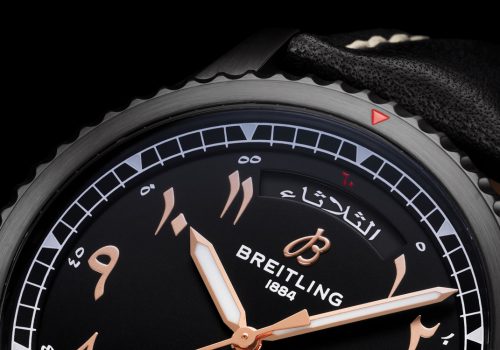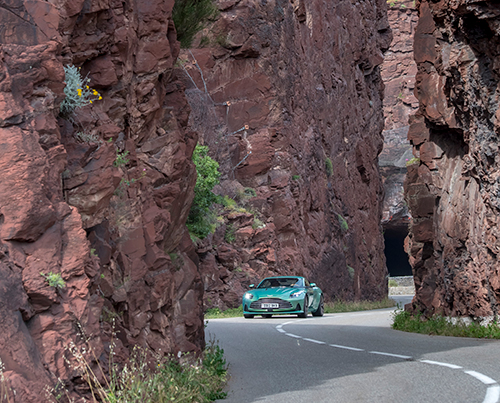 I’ve always thought that an Aston Martin is a very refined choice for someone looking to buy a modern dream car. Indeed, not only are Astons stunning to look at, but they also come with a lot of positive brand equity: they’re rare, they’re loved, and they’re respected. As a result, you’ll nearly always get a smile, a thumbs up or even a wave from the pedestrians you pass while behind the wheel of an Aston. Compare that to the often-hostile reception you get when you drive an exotic from Lamborghini or Ferrari, and you’ll see how buying an Aston can also provide a sense of sagacity to the way you manage your extravagances. I’ve actually spent some time trying to understand this phenomenon and reasoned it may have something to do with Aston’s design language, which is stealthier than other brands in this price bracket, hence it doesn’t look like you’re trying to overtly show off. It may also have something to do with the fact that James Bond drives one. Whatever the case, the flip side is, as one friend candidly put it to me recently, that, “Most people who have Aston money buy something better.” Sure, that’s harsh, but it’s also difficult to refute. If you buy an Aston, you may be buying something that’s beautiful and classy, but it only takes a few minutes for the reality to dawn on you that these machines are technically and functionally outgunned by the competition. In short, Astons are the automotive opposite of Porsches, one is bought with the head, the other with the heart. Luckily, the brand’s new majority owner – Canadian billionaire Lawrence Stroll – didn’t need long at the helm to realise what the priorities were in terms of investments, and he has ploughed hundreds of millions into the company to bring its products up to speed. As such, the new DB12 is not just an important car for the company but also for him, as this is the first all-new Aston to be built under his stewardship. No pressure then.
I’ve always thought that an Aston Martin is a very refined choice for someone looking to buy a modern dream car. Indeed, not only are Astons stunning to look at, but they also come with a lot of positive brand equity: they’re rare, they’re loved, and they’re respected. As a result, you’ll nearly always get a smile, a thumbs up or even a wave from the pedestrians you pass while behind the wheel of an Aston. Compare that to the often-hostile reception you get when you drive an exotic from Lamborghini or Ferrari, and you’ll see how buying an Aston can also provide a sense of sagacity to the way you manage your extravagances. I’ve actually spent some time trying to understand this phenomenon and reasoned it may have something to do with Aston’s design language, which is stealthier than other brands in this price bracket, hence it doesn’t look like you’re trying to overtly show off. It may also have something to do with the fact that James Bond drives one. Whatever the case, the flip side is, as one friend candidly put it to me recently, that, “Most people who have Aston money buy something better.” Sure, that’s harsh, but it’s also difficult to refute. If you buy an Aston, you may be buying something that’s beautiful and classy, but it only takes a few minutes for the reality to dawn on you that these machines are technically and functionally outgunned by the competition. In short, Astons are the automotive opposite of Porsches, one is bought with the head, the other with the heart. Luckily, the brand’s new majority owner – Canadian billionaire Lawrence Stroll – didn’t need long at the helm to realise what the priorities were in terms of investments, and he has ploughed hundreds of millions into the company to bring its products up to speed. As such, the new DB12 is not just an important car for the company but also for him, as this is the first all-new Aston to be built under his stewardship. No pressure then.
The good news is that the DB12 is the first new Aston in decades that doesn’t rely solely on its looks, it also ticks the boxes in terms of technology, functionality, and sporting prowess – but I’ll delve into all of that a little later. First let me admit that the DB12 does look a lot like the DB11, but that’s hardly a bad thing, is it? Rest assured it’s not a glorified facelift, it is an all-new car with just 20 per cent of the DB11’s parts carried over to the DB12. The interesting thing is the DB12 looks fitter in the flesh than its predecessor. The overall proportions are the same but the stance, the vents on the sides and the way the wheels pack the arches lead you to the realisation that this one’s more assertive, more capable, and more sculpted. It looks as though the DB11 had to boot camp hard to become the DB12. Happily, that’s the truth of the matter.
Start the car up and you hear a familiar sounding V8. (There’s no option of a V12 anymore – emissions legislation apparently caught up with it.) And there are no real surprises with this engine either, as it’s the familiar 4.0-litre Mercedes-Benz-sourced V8 that we have come to know so well since 2018. But in the DB12, they’ve given it a new flavour thanks to modified camshafts, an 8.6:1 compression ratio, overhauled cooling, and bigger turbos. By doing so they gained an extra 150bhp, meaning the DB12 boasts 671 bhp and 800 Nm, which trumps the 612 bhp / 760 Nm Ferrari Roma and 641 bhp / 800 Nm Porsche Turbo S. No wonder then that no one is comparing the DB12 to a Bentley GT anymore, and why Aston Martin calls it the world’s first super tourer (and not a grand tourer).
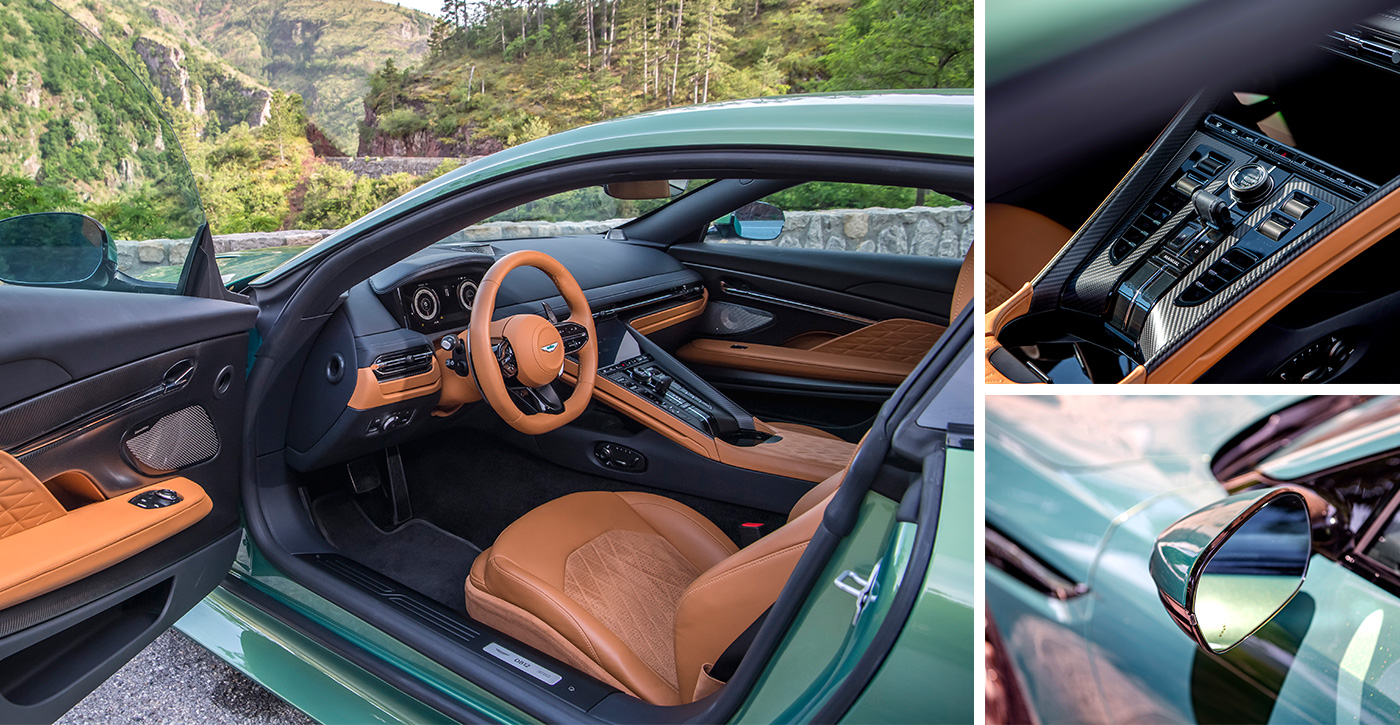
ABOVE LEFT: Aston put a lot of effort into making sure customers don’t feel short-changed by the interior of this DB and they succeeded. ABOVE TOP RIGHT: They also spent a lot of time working out what physical controls customers want and what level of decluttering can take place. They arrived at a perfect balance of physical and digital. BOTTOM RIGHT: The mirrors are now smaller and frameless, plus the whole unit swivels when adjusted, rather than the glass inside the housing.
On the open road, the DB12 is supremely poised, no matter how hard you push it. It feels nothing like the DB11, which was powerful and fun but also too soft, offering no real feedback or control. Weirdly enough, the DB12 isn’t just more settled, and confidence inspiring, it also manages to be more comfortable than the DB11 too. And the engine’s way better: it has a fat torque band – the peak runs from 2750 to 6000 rpm, that makes it feel supremely strong throughout the rev range. Aston quotes a 100 km/h sprint time of 3.5 seconds, but on the move, it somehow feels even quicker than that. Remarkably, when we discussed its capabilities with Aston’s engineers, they admitted to benchmarking McLarens for performance and Bentleys for luxury and I think the DB12 manages to battle on both fronts, offering supercar speeds but from a bona fide GT package.
We tested it on all sorts of roads during our drive in France, from autoroutes to deserted country lanes, with some narrow, old, cobbled lanes thrown in for good measure, and the DB12 handles everything with aplomb. Somehow, even though the DB12 and its predecessor are nearly identical in terms of outward dimensions, (the front track of the DB12 increased by 6mm, the rear by 22mm, while the width of the car at the widest point – the mirrors – is down a little and its length slightly reduced), it actually feels way smaller, sharper, more responsive and infinitely more involving, especially through technical corners, no doubt aided by the massive DB12-specific Michelin Pilot Sport S5 tyres (275/35-ZR21 up front, 325/30-ZR21 at the rear).
The chassis is also so well-tuned. It’s comfortable when you’re cruising but offers heaps of feedback and sharpness when you want to get on with it. The three main drive modes – GT, Sport, and Sport+ – all offer great ride quality (there’s also now a Wet and an Individual mode although I didn’t try them). And, finally, the gearbox is an eight-speed paddle-shift auto by ZF with a shorter final drive for better sprinting and an electronically adjustable differential that we were told can go from fully locked to fully open in milliseconds. So, how that helps is by providing greater agility during low and mid-speed manoeuvres (diff open), as well as much more control in oversteer and high-speed lane changing (diff fully or partly closed).
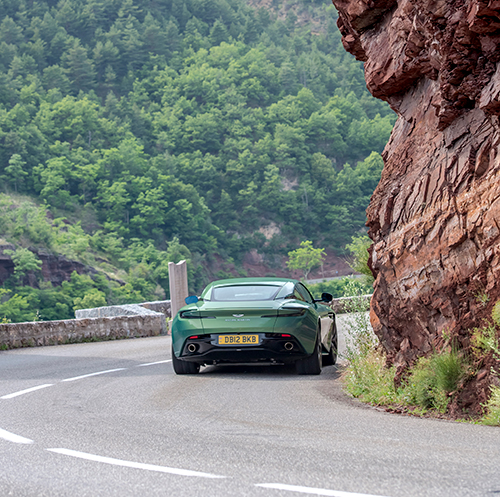
ABOVE: The wheels have grown by an inch versus the DB11, with the DB12 sitting on 21-inch rims, and they have seven different finishes now too, including the ‘Satin Bronze’ of this model. As for paint options, though we love an Aston in green, we find this Iridescent Emerald too light. Try their Racing Green instead, it’s timeless. And, for the interior, we prefer the Copper Tan Metallic leather to the Oxford Tan here. Yup, as you can tell, we’re ready to make our order.
This is all great stuff, of course, but ultimately, what makes the DB12 more compelling than any Aston for decades is its interior, replete with its overhauled tech, greater comfort, and superior levels of luxuriousness that finally leave you wanting for nothing. FYI, there are now three options of seats: comfort, sports plus and performance. I tried the first two and saw pictures of the third (gorgeous carbon fibre buckets) and you know what? I kind of wish Aston had developed
an even more comfortable seat à la S-Class Coupé, with a massage function and all, although I’d probably still choose the carbon fibre optional ones because of the way they look (and presumably hold you). Oh, while I’m at it, I’d also like Aston to add soft-close door functions to the DB12.
On the plus side, overall visibility has been noticeably improved thanks to two key changes: first, the infotainment screen was lowered from on top of the dash and is now integrated into it, and second, Aston cleared out the area between the (now frameless) door mirrors and A-pillars. As a matter of fact, speaking of the infotainment system, the DB12 boasts Aston’s first touchscreen. It’s quick to react, not overcrowded with menus, and was developed entirely in-house (thus, not lifted from the old-gen Mercedes parts bin, thank goodness). Honestly, I found it slick and logical to use, even if there were a few early version gremlins on my pre-production model. Aston engineers assured me they’re aware of these teething problems and have a steady stream of software updates already prepared, even after the official launch, so I’m confident they’ve got a handle on it.
Which reminds me, one other issue Aston Martin promised to sort out by the time the DB12 goes into normal production was the terrible sound that the indicator makes whenever you’re signalling a turn. It’s the same awful sound we complained about on the DBX but luckily, they’re now acknowledging it gets on people’s nerves and have apparently developed an improved sound that will be introduced as part of another software update.
In the end I was very sad to hand back the keys to my DB12. This is a car I could live with on a daily basis. It’s comfortable, fast, well insulated, has room for two kids in the back, offers a decent trunk, isn’t too thirsty (so long as you temper your desire to be aggressive with the throttle) and won’t even bother the neighbours (the exhaust note is really quite quiet in GT mode). I love the rhythm we got into, blasting from turn to turn using only the slightest of inputs to position the car perfectly, while it challenged me to carry ever more speeds into the sweeping corners of the Route Napoléon – the DB12 really is a super tourer par excellence. It appears Aston Martin is finally emerging from a tough period of financial uncertainty and it’s great to see how, under the stewardship of Stroll, they’re finally making the cars we always hoped they would. Now, with deliveries having just begun, let’s hope they achieve the sales they deserve to carry on down this path. The DB went up in price, it now starts at 250,000 USD, but it’s worth every cent.





